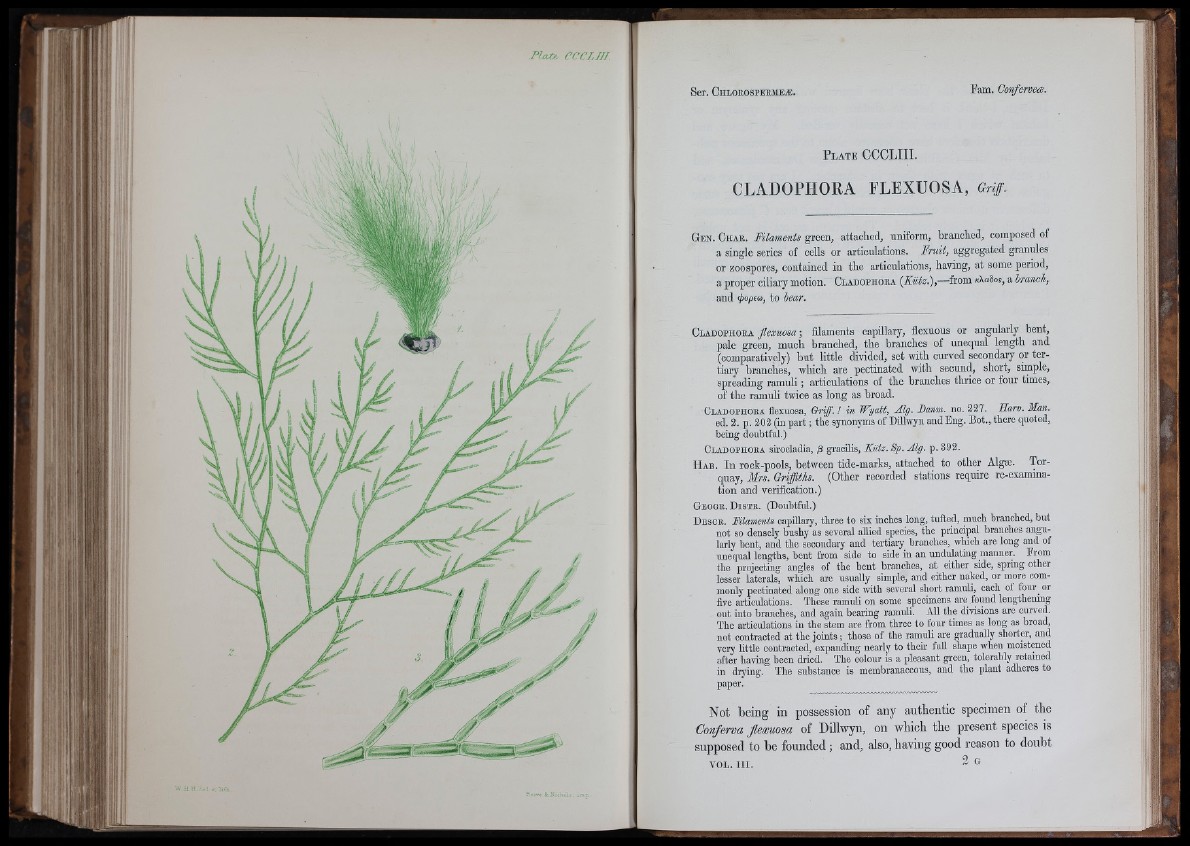
m
Ser. Chlorospekmeæ. Pam.
\
4 \-
P l a t e CCCLIII.
CLADOPHORA FLEXUOSA, Griff.
G e n . C h a u . Filaments green, attached, uniform, branched, composed of
a single series of cells or articulations. Fruit, aggregated granules
or zoospores, contained in the articulations, having, at some period,
a proper ciliary motion. C l a d o p h o e a [Kütz.),—from AaSos, a branch,
and fiiapem, to bear.
C l a d o p h o e a flexuosa ; filaments capillary, flexuous or angularly bent,
pale green, much branched, the branches of unequal length and
(comparatively) but little divided, set with curved secondary or tertiary
branches, which are pectinated with secund, short, simple,
spreading ramuli ; articulations of the branches thrice or four times,
of the ramuli twice as long as broad.
Cladophoea flexuosa, Griff. ! in Wyatt, Alg. Danm. no. 237. Harv. Man.
ed. 3. p. 203 (in part ; the synonyms of Dillwyn and Eng. Bot., there quoted,
being doubtful.)
Cladophoea sirocladia, 3 gracilis, Kiitz. Sp. Alg. p. 393.
H a b . In rock-pools, between tide-marks, attached to other Algæ. Torquay,
Mrs. Oriffiths. (Other recorded stations require re-examination
and verification.)
Geoge. Dis t e . (Doubtful.)
D esoe. Filaments capiUary, three to six inches long, tufted, much branched, but
not so densely bushy as several allied species, the principal branches angularly
bent, and the secondary and tertiary branches, which are long and of
unequal lengths, bent from side to side in an undulating maimer. Prom
the projecting angles of the bent branches, at either side, spring other
lesser laterals, which are usually simple, and either naked, or more commonly
pectinated along one side with several short ramuli, each of four or
five articulations. These ramuli on some specimens are found lengthening
out into branches, and again bearing ramuli. All the divisions are curved.
The articulations in the stem are from three to four times as long as broad,
not contracted at the joints ; those of the ramuli are graduaUy shorter, and
very little contracted, expanding nearly to their full shape when moistened
after having been dried. The colour is a pleasant green, tolerably retained
in drying. The substance is membranaceous, and the plant adheres to
paper.
Not being in possession of any authentic specimen of the
Conferva flexuosa of Dillwyn, on which the present species is
supposed to be founded ; and, also, having good reason to doubt